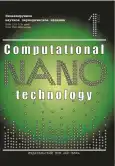Neural Networks in the Task of Genre Classification of Musical Compositions
- Authors: Belenkiy M.A.1, Grineva N.V.1
-
Affiliations:
- Financial University under the Government of the Russian Federation
- Issue: Vol 11, No 1 (2024)
- Pages: 135-150
- Section: ARTIFICIAL INTELLIGENCE AND MACHINE LEARNING
- URL: https://journals.eco-vector.com/2313-223X/article/view/631301
- DOI: https://doi.org/10.33693/2313-223X-2024-11-1-135-150
- ID: 631301
Cite item
Abstract
This study investigates the application of neural networks in the task of classifying audio signals into ten different genres. The peculiarities of processing audio signals in the digital environment are examined, along with the relationship between Fourier transformation and spectrograms, and the characteristics of audio signals. Neural network training was conducted using the GTZAN dataset, which contains 1000 compositions. Four comparable datasets were formed based on this dataset, and the performance of three neural network architectures – convolutional, recurrent, and multilayer perceptron – was evaluated on each of them. The practical significance of this work lies in the possibility of forming musical recommendations and organizing music. The goal of the study is to develop a classifier that could accurately determine the probability of a composition belonging to one of the ten genres.
Full Text
About the authors
Mikhail A. Belenkiy
Financial University under the Government of the Russian Federation
Author for correspondence.
Email: michael.belenkiy@yandex.ru
ORCID iD: 0009-0005-9079-9489
student, Faculty of Information Technology and Big Data Analysis
Russian Federation, MoscowNatalia V. Grineva
Financial University under the Government of the Russian Federation
Email: ngrineva@fa.ru
ORCID iD: 0000-0001-7647-5967
Cand. Sci. (Econ.), Associate Professor, associate professor, Department of Data Analysis and Machine Learning
Russian Federation, MoscowReferences
- Silla C.N., Koerich A.L., Kaestner C.A.A. A feature selection approach for automatic music genre classification. International Journal of Semantic Computing. 2009. No. 03. Pp. 183–208.
- Geoffroy P. A large set of audio features for sound description (similarity and classification). In: CUIDADO Project. 2004.
- Silla C., Koerich A., Kaestner C. A machine learning approach to automatic music genre classification». Journal of the Brazilian Computer Society. 2008. Vol. 14. No. 3.
- Tzanetakis G., Cook P. MARSYAS: A framework for audio analysis. Organised Sound. 2000. No. 4 (3). Pp. 169–175.
- Tzanetakis G., Essl G., Cook P. Automatic musical genre classification of audio signals. In: Proc. Int. Symp. Music Information Retrieval (ISMIR). Oct. 2001.
- Tzanetakis G., Cook P. Musical genre classification of audio signals. IEEE Transactions on Speech and Audio Processing. 2002. Vol. 10. No. 5. Pp. 293–302.
- Choi K., Fazekas G., Sandler M. Automatic tagging using deep convolutional neural networks. In: Intl. Society for Music Information Retrieval Conf. (ISMIR). 2016.
- Choi K., Fazekas G., Sandler M., Cho K. Convolutional recurrent neural networks for music classification. 2016.
- Rafi Q.G., Noman M., Prodhan S.Z. et al. Comparative analysis of three improved deep learning architectures for music genre classification. International Journal of Information Technology and Computer Science. 2021. No. 13. Pp. 1–14.
- Van den Oord A., Dieleman S., Schrauwen B. Deep content-based music recommendation. In: Advances in Neural Information Processing Systems. 2013. Pp. 2643–2651.
- Van den Oord A., Dieleman S., Schrauwen B. Transfer learning by supervised pre-training for audio-based music classification. In: Conference of the International Society for Music Information Retrieval, (ISMIR 2014). 2014.
- Vaibhavi M., Krishna P.R. Music genre classification using neural networks with data augmentation. 2021.
- Crème M., Burlin C., Lenain R. Music genre classification. Stanford University, December 15, 2016.
Supplementary files




























